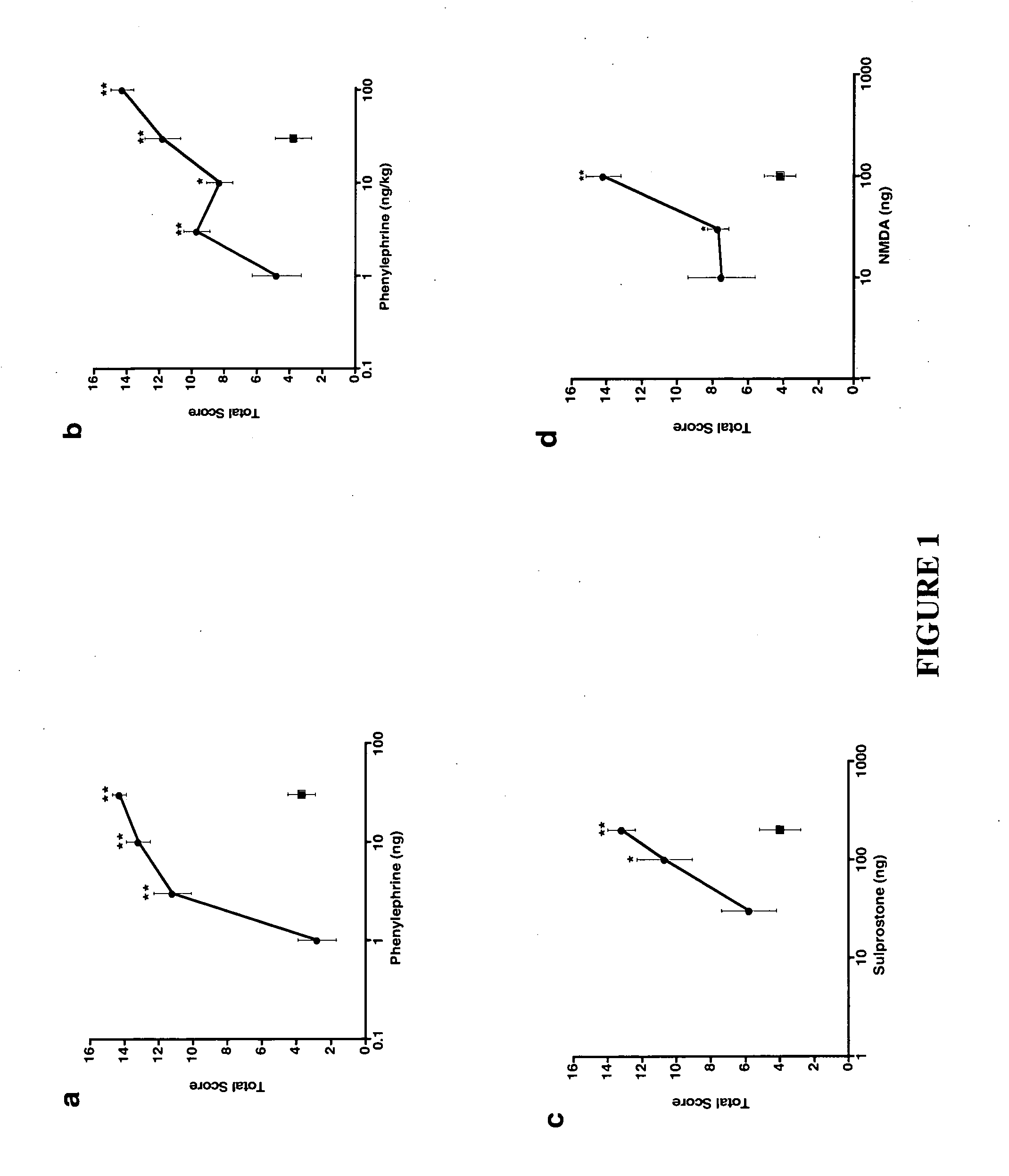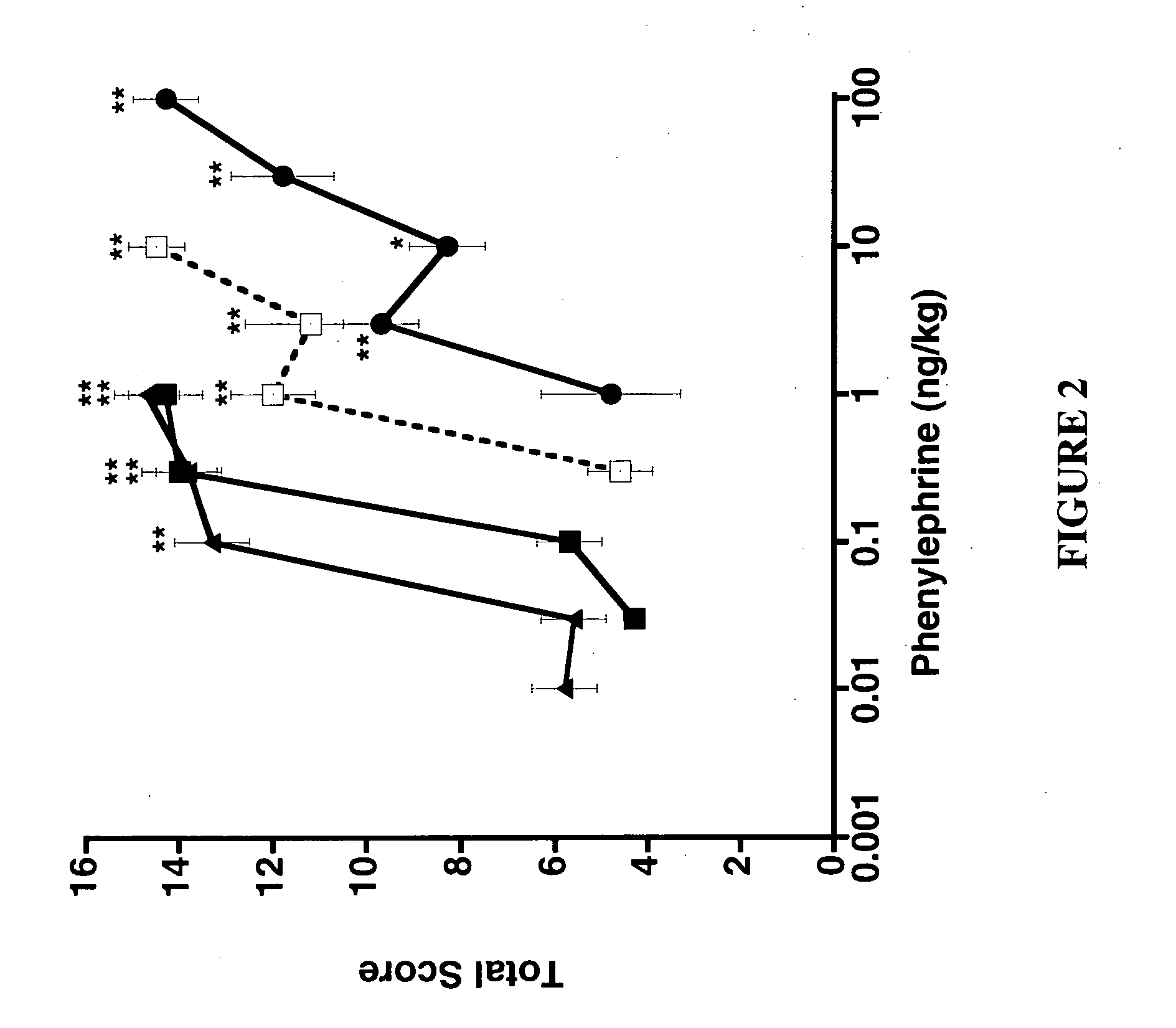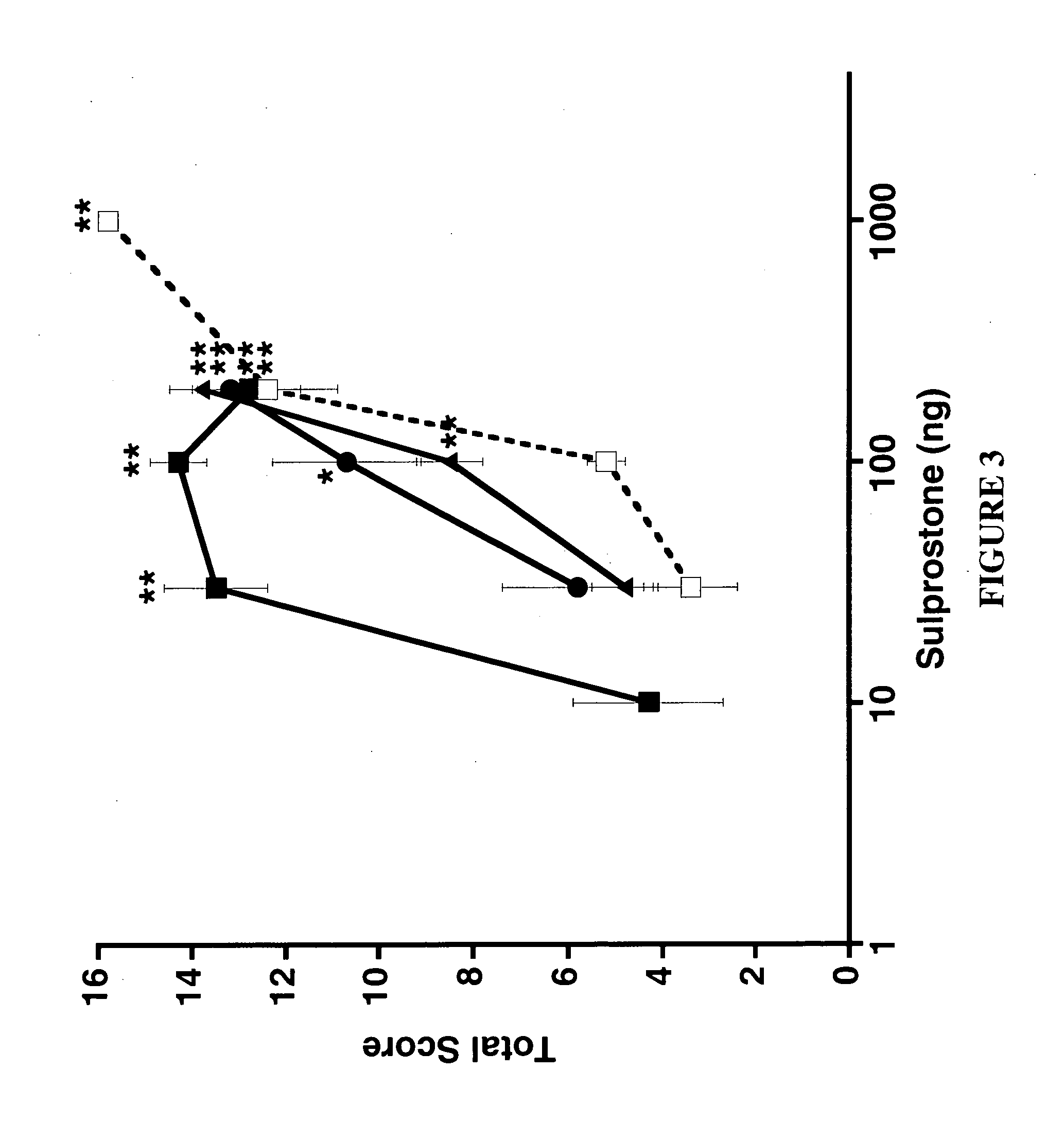Novel methods for identifying improved, non-sedating alpha-2 agonists
- Summary
- Abstract
- Description
- Claims
- Application Information
AI Technical Summary
Benefits of technology
Problems solved by technology
Method used
Image
Examples
example i
Mouse Models with Different Mechanisms of Sensory Sensitization
This example demonstrates that the increased sympathetic tone of α-2A and α-2C knockout mice enhances induction of tactile hypersensitivity by α-1 receptor activation.
A. Different Mechanisms of Sulprostone-Phenylephrine-Induced Tactile Hypersensitivity
To dissect the contribution of the sympathetic nervous system to sensory sensitization, mouse models having different mechanisms of sensory sensitization were developed. Tactile hypersensitivity was measured in mice following intrathecal or intraperitoneal injection of an inducing agent by scoring the response to light stroking of the mouse flank with a paintbrush. To mimic increased sympathetic tone, phenylephrine, an α-1 adrenergic receptor agonist, was injected. As shown in FIGS. 1a and 1b, intrathecal (i.t.) or intraperitoneal (i.p.) dosing of phenylephrine caused tactile hypersensitivity, with significant responses observed starting at doses of 3 ng i.t. and 3 ng...
example ii
Comparison of Activity of α-2 Agonists Brimonidine and Clonidine
This example demonstrates that α-adrenergic agonists differ in their ability to alleviate sensory hypersensitivity that is enhanced by the sympathetic nervous system.
A. Brimonidine, but not Clonidine, Alleviates Sympathetically-Enhanced Tactile Hypersensitivity
Spinally administered α-2 adrenergic agonists alleviate neuropathic pain through a spinal α-2A receptor. To determine if the increased sympathetic activity in α-2 knockout mice alters the analgesic activity of the α-2 agonists, several agonists were assayed for activity. The α-2 agonists brimonidine and clonidine were first tested in the NMDA model in which sensitization is not influenced by the basal sympathetic tone of the knockout mice. Intrathecal co-administration of NMDA with either clonidine or brimonidine resulted in complete inhibition of tactile hypersensitivity in the wildtype and α-2C (FIGS. 5a and c, respectively) knockout mice. As expected, nei...
example iv
Preparation of Compounds
This example describes preparation of several α-2 agonists.
A. Preparation of Compound 1 ((+)-(S)-4-[1-(2,3-dimethyl-phenyl)-ethyl]-1,3-dihydro-imidazole-2-thione)
A mixture of (+)-(S)-4-[1-(2,3-dimethyl-phenyl)-ethyl]-1H-imidazole (dexmeditomidine; 2.00 g, 10.0 mmol) prepared as described in Cordi et al., Synth. Comm. 26: 1585 (1996), in THF (45 mL) and water (40 mL) was treated with NaHCO3 (8.4 g, 100 mmol) and phenylchlorothionoformate (3.7 mL, 27.4 mmol). After stirring for four hours at room temperature, the mixture was diluted with water (30 mL) and ether (75 mL). The organic layer was removed, and the aqueous layer extracted with ether (2×50 mL). The organic layers were dried over MgSO4 and filtered. The residue was concentrated under vacuum, diluted with MeOH (54 mL) and reacted with NEt3 (6.5 mL) at room temperature for 16 hours. The solvent was removed under vacuum and replaced with 30% CH2Cl2:hexane. The solvent was removed again and solids fo...
PUM
| Property | Measurement | Unit |
|---|---|---|
| Electrical resistance | aaaaa | aaaaa |
| Cell angle | aaaaa | aaaaa |
| Contraction enthalpy | aaaaa | aaaaa |
Abstract
Description
Claims
Application Information
 Login to View More
Login to View More - R&D
- Intellectual Property
- Life Sciences
- Materials
- Tech Scout
- Unparalleled Data Quality
- Higher Quality Content
- 60% Fewer Hallucinations
Browse by: Latest US Patents, China's latest patents, Technical Efficacy Thesaurus, Application Domain, Technology Topic, Popular Technical Reports.
© 2025 PatSnap. All rights reserved.Legal|Privacy policy|Modern Slavery Act Transparency Statement|Sitemap|About US| Contact US: help@patsnap.com



